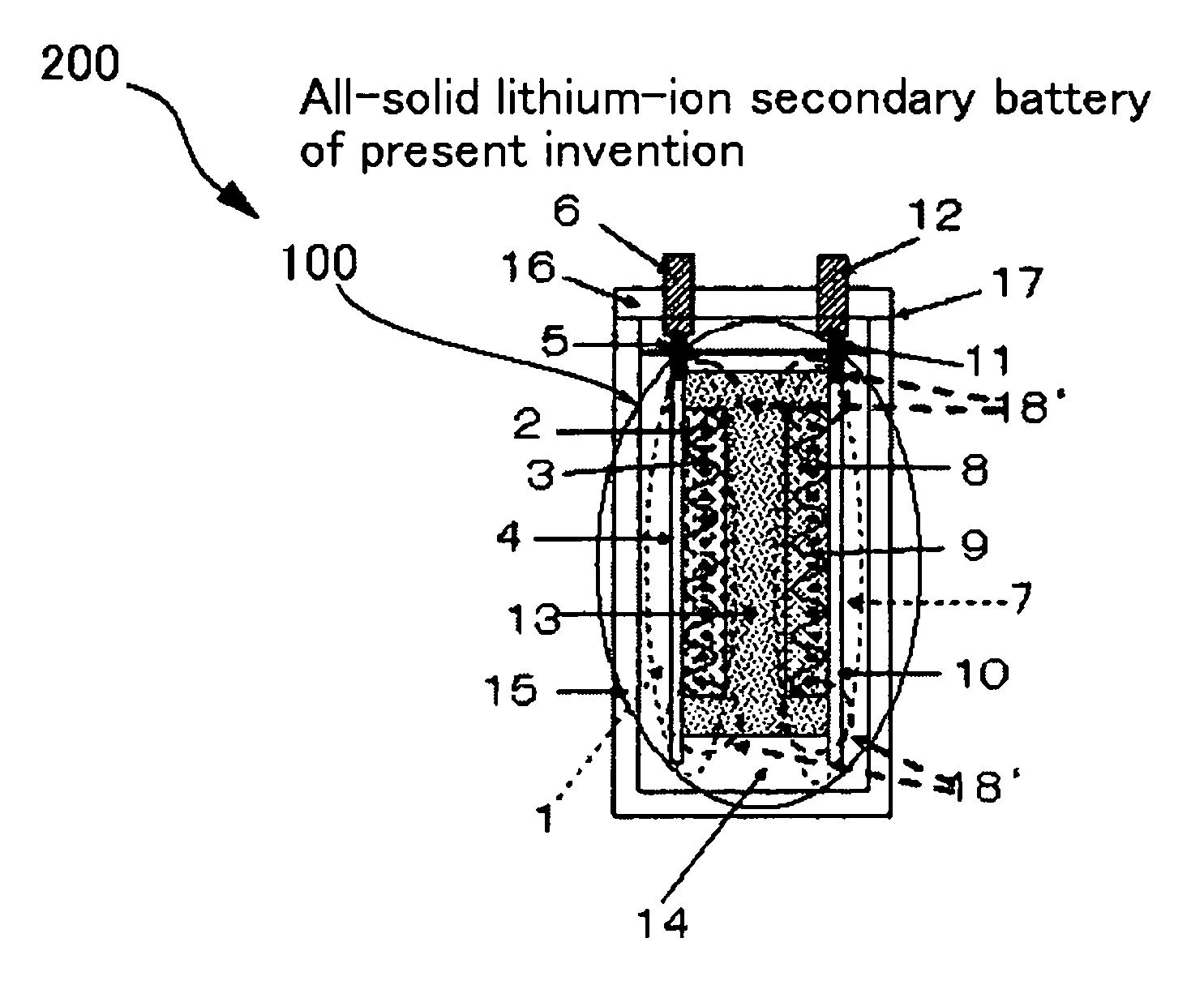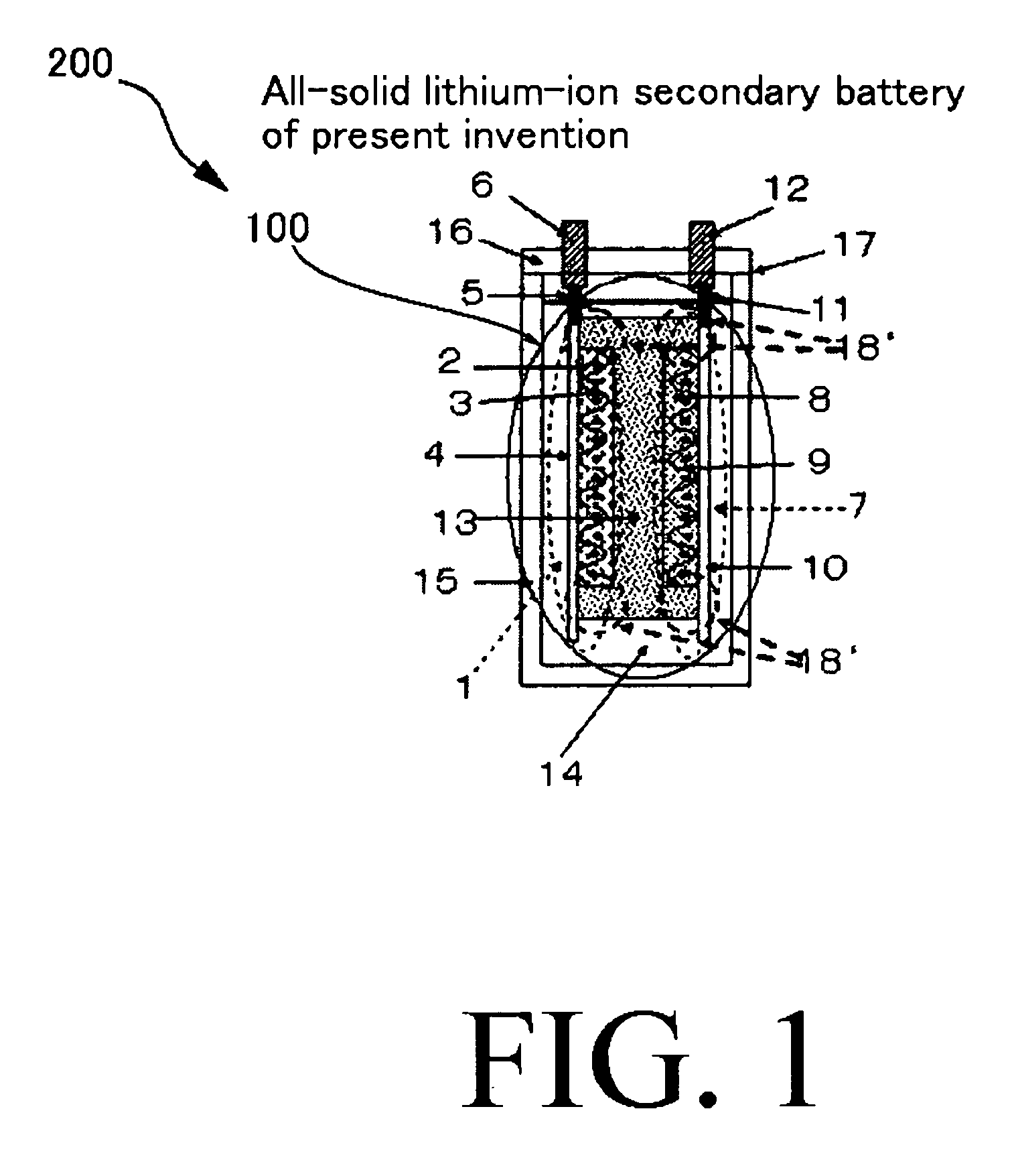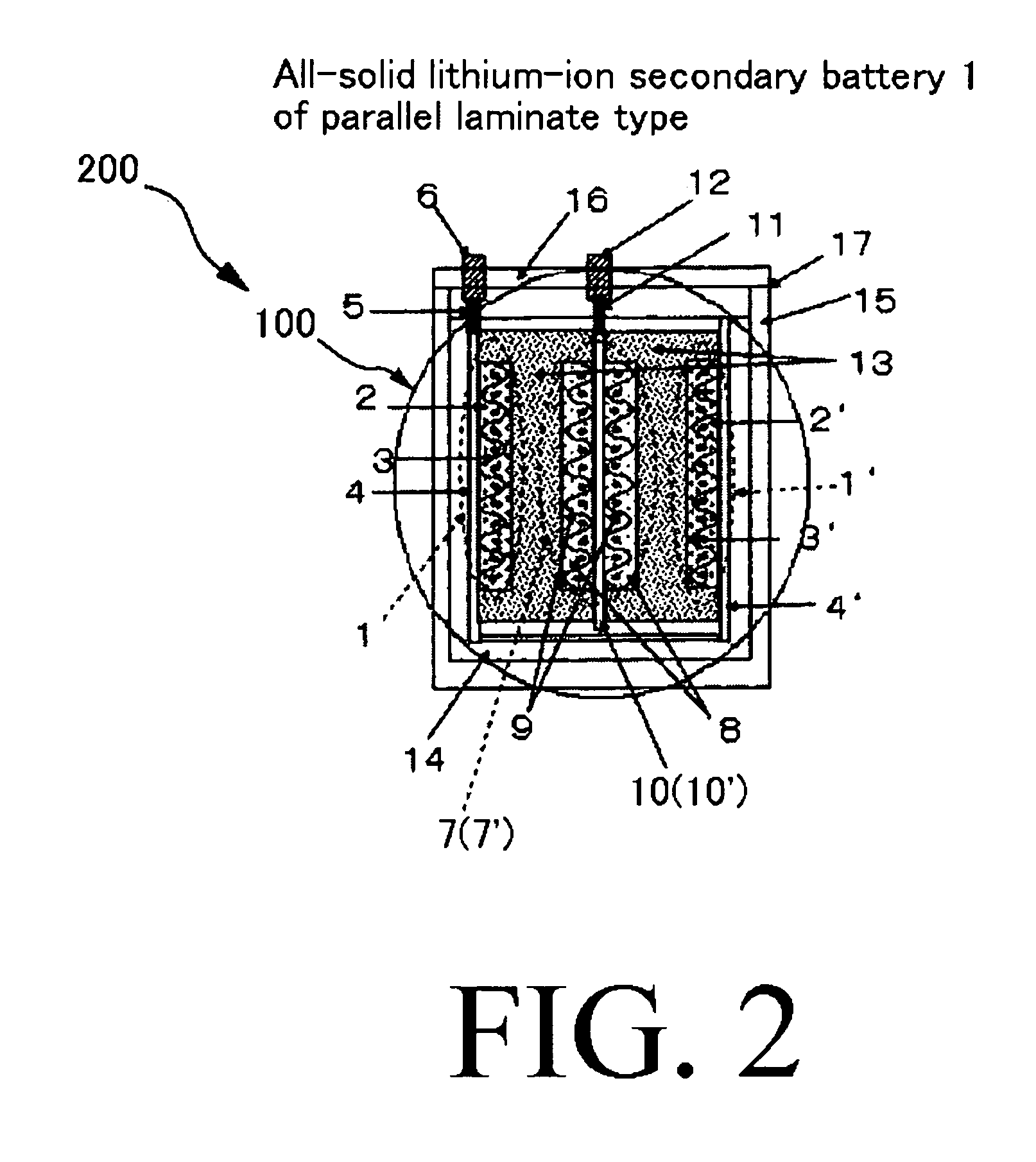Battery device and all-solid lithium-ion secondary battery
a lithium-ion secondary battery, all-solid technology, applied in the direction of cell components, final product manufacturing, sustainable manufacturing/processing, etc., can solve the problem of increasing the danger of battery firing, the inability of a battery element to retain an active material of the electrode, and the inability to achieve the effect of retaining the active material of the battery
- Summary
- Abstract
- Description
- Claims
- Application Information
AI Technical Summary
Benefits of technology
Problems solved by technology
Method used
Image
Examples
first embodiment
[0073]First, a first embodiment of a battery device and an all-solid lithium-ion secondary battery according to the present invention will be described in detail.
[0074]FIG. 1 is a vertical section view which shows an all-solid lithium-ion secondary battery in accordance with a first embodiment of the present invention. FIG. 2 is a vertical section view which shows an all-solid lithium-ion secondary battery of a parallel laminate type in accordance with the present invention. The all-solid lithium-ion secondary battery shown in FIG. 2 includes an intermediate electrode.
[0075]FIG. 3 is a vertical section view which shows another all-solid lithium-ion secondary battery of a parallel laminate type in accordance with the present invention. An intermediate electrode included in the all-solid lithium-ion secondary battery is different from that of the all-solid lithium-ion secondary battery shown in FIG. 2
[0076]FIG. 4 is a vertical section view which shows an all-solid lithium-ion secondar...
example 1
[0241]A secondary battery including a battery device of the present invention (FIG. 16) was produced as described above. The battery device of which electrodes were formed on lead boards so as to be covered with an electrolyte provided therebetween was produced as described above.
[0242]In this regard, lithium cobaltate was used as a cathode active material. A ternary-based sulfide-lithium ion conducting glass constituted of Li2S, SiS2, and LiPO4 was used as an electrolyte. The lithium cobaltate and the ternary-based sulfide-lithium ion conducting glass were mixed at a weight ratio of 7:3 to obtain a cathode mixture material. A cathode was produced by using the cathode mixture material. A diameter of the produced cathode was 16 mm and a thickness of the produced cathode was about 250 μm.
[0243]A diameter of the electrolyte consisted of the ternary-based sulfide-lithium ion conducting glass and filled into a spacing between the electrodes was 18 mm and a thickness of the electrolyte wa...
example 2
[0257]In the case where the thicknesses of the cathode and the anode included in the battery device produced in the Example 1 were changed to various thicknesses, a discharge capacity of each battery device after charge of each battery device was examined and evaluated.
[0258]Battery devices were produced in the same manner as the Example 1 except that thicknesses of cathodes were changed as shown in FIG. 19. Then, all-solid lithium-ion secondary batteries were produced by using the battery devices. As a result, the thus produced all-solid lithium-ion secondary batteries had no short-circuit and were normal.
[0259]Charge-discharge characteristics of the all-solid lithium-ion secondary batteries were evaluated in the same manner as the Example 1. Discharge capacities of the all-solid lithium-ion secondary batteries were obtained at a voltage in the range of 3.7 V to 2 V at the end terminal. The discharge capacities of the all-solid lithium-ion secondary batteries in the range of 3.5 V ...
PUM
 Login to View More
Login to View More Abstract
Description
Claims
Application Information
 Login to View More
Login to View More - R&D
- Intellectual Property
- Life Sciences
- Materials
- Tech Scout
- Unparalleled Data Quality
- Higher Quality Content
- 60% Fewer Hallucinations
Browse by: Latest US Patents, China's latest patents, Technical Efficacy Thesaurus, Application Domain, Technology Topic, Popular Technical Reports.
© 2025 PatSnap. All rights reserved.Legal|Privacy policy|Modern Slavery Act Transparency Statement|Sitemap|About US| Contact US: help@patsnap.com



